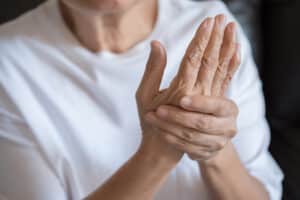
Original Content By Susan Bernstein and Mary Anne Dunkin
Nearly one in five U.S. adults had at least one massage in the previous year, according to the American Massage Therapy Association’s (AMTA) 2017 Consumer Survey. Of those, 42 percent received massage for health or medical reasons such as pain management, soreness, stiffness or injury rehabilitation.
Research suggests that massage can affect the body’s production of certain hormones linked to blood pressure, anxiety, heart rate and other key vital signs. But is massage safe and effective for people with arthritis?
What the Research Reveals
While most research on massage examines its effects on the general population, a number of recent studies have shown its effectiveness in people with arthritis and related conditions.
Knee osteoarthritis (OA). A handful of studies, including a 2018 study published in the Journal of General Internal Medicine, have found massage to be beneficial for people with knee osteoarthritis. The 2018 study, which assigned 200 patients with knee OA into one of three treatment groups, found those receiving a one-hour whole-body massage weekly experienced significant improvement in pain and mobility after eight weeks compared to those receiving light touch or standard care.
Hand arthritis. In an earlier study conducted at the University of Miami, a 15-minute, moderate pressure massage daily led to reduced pain and anxiety and improved grip strength in 22 adults diagnosed with hand or wrist arthritis. The participants were given four weekly massages from a therapist and taught to massage their sore joints daily at home. Results showed that the combination of massages could possibly reduce hand pain up to 57 percent.
Fibromyalgia. A 2014 review of nine randomized trials published in PLoS One found that massage therapy for five weeks or more significantly improved pain, anxiety and depression in patients with fibromyalgia.
Back pain. One of the most common reasons people pursue massage is for low back and neck pain, according to the National Center for Complementary and Integrative Health. A body of evidence confirms its effectiveness for that purpose, including a study of 401 people with chronic low back pain published in the Annals of Internal Medicine. The study found that people receiving 10 weekly sessions of either relaxation massage or structural massage had less pain and were better able to perform daily activities than those receiving usual care (such as analgesic and anti-inflammatory medications, physical therapy and education). However, the benefits of massage were less clear 12 months after message therapy ended. A separate 2014 study in Scientific World Journal found that deep tissues massage alone relieved back pain equally as well as the combination of massage and nonsteroidal anti-inflammatory drugs (NSAIDs).
How Does Massage Work?
Research has shown that massage can lower the body’s production of the stress hormone cortisol; decrease levels of the hormone arginine-vasopressin, which may lower blood pressure; reduce levels of some inflammatory cytokines including IL-4 and IL-10; and increase production of the mood-boosting hormone serotonin.
So what matters most in massage for arthritis? What are some considerations?
See Part 2: Massage Effectiveness for Arthritis and Related conditions, published 7/27/23.
